Blogging About Failure - Part 1: The Adventure Games That Broke Me In 2022
By ZombiePie 10 Comments
Preamble
With feelings on the site at an all-time high, I decided to bring things back to Earth with a blog about failure. Contrary to popular belief, I only sometimes write about the games I finish or play. In fact, most games I play come and go without a single treatise or commentary about my thoughts about it gracing the internet. However, rather than let that potential source of angst lord over me, I decided to use it as a fun blog idea before I buckle down and annotate my favorite games from the year. Due to the pressures of modern society, thanks in no part to capitalism, we live in fear of failure. Nonetheless, taking risks and living with many of those risks not panning out is an essential part of life. Therefore, I don't view any of the problems or issues I am about to discuss in anger or frustration. Instead, I still pat myself on the back that I pushed myself to work outside of my comfort zone in the first place and that these risks all provide critical teachable moments.
For the first part of this self-reflection, I will exclusively look at adventure games. It's weird to think about this point, but next week will mark my first anniversary of starting my ranking of adventure game puzzles on the site. I started the series as an experiment after I needed something to write about that wasn't just the Final Fantasy series or the state of modern Square-Enix. I settled with my video game comfort food, adventure games, and the posts have become some of the more popular things I post on the site. Unfortunately, some games I play either push me to the breaking point or, halfway through, I realize they are not worth the effort to write about exhaustively. So, without further ado, let's review some of those games! Also, where possible, I'll provide links to archives of my playthroughs of games covered or discussed on this blog!
I Played These Games, Finished Them, & Still Plan To Blog About Them
Return To Zork
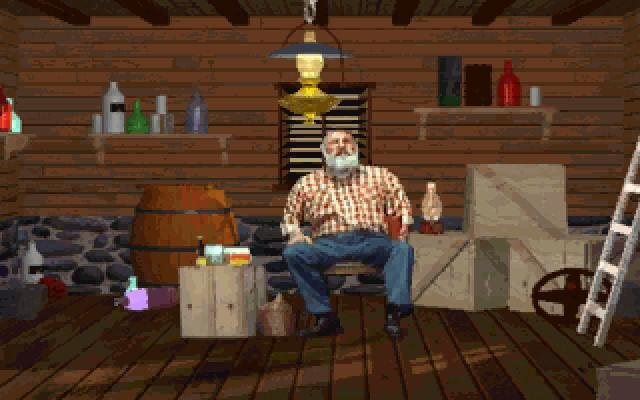
If ever there was a game I wish I could recommend for Vinny Caravella's descent into the world of FMV adventure games, this would be at the top of my list. When people hear "Zork," they think of the legendary text-based adventure games from Infocom. The original trilogy of Zork games are among the most important games ever made and informed the adventure game genre for over forty years. They are the source of many a grizzled boomer gamer joke due to their wonton cruelty and penchant for killing their players in the most ludicrous manner possible, but it was a different time. The fact the games would kill you if you didn't carry a torch when entering a cave or hallway was part of the charm. What people often forget is in one of their last gasps to remain relevant in the industry, Infocom rebooted the Zork series as Myst-adjacent 3D FMV adventure games. These games do not use the traditional text parser like most of Infocom's works and instead use a click-based inventory management system. They do, however, maintain the series' habit of murdering you when you least expect it.
This reboot trilogy starts with 1993's Return to Zork and includes Zork Nemesis: The Forbidden Lands and Zork: Grand Inquisitor. We speak of remasters and soft reboots as if they are a new industry trend squashing the creativity of the designers, programmers, and coders that populate it. In reality, popular video game series and franchises have been remastering older works to be compatible with new hardware and software since the dawn of video games. The Zork series is proof positive of that. With Return to Zork, the game is well-known for being punishingly challenging. For example, you encounter a vulture at the start of the game on a signpost next to a plant. If you attempt to talk to the vulture, you die, and if you pick the plant, you'll inadvertently enter a fail state with the game not telling you that until you are three hours deep. I had the benefit of recalling an ancient playthrough I had with the game in the 90s, so my second rodeo was not as bad as a normal blind playthrough. The puzzles in this game are BRUTAL, and instead of employing my standard format, I was thinking of looking at the top three puzzles in each Zork reboot game in a single post. They should be covered together, considering the franchise's current irrelevance can be easily observed in the design and tonal shift experienced while you play them in chronological order. However, excuses are excuses, and this was a rare miss on my part.
Amerzone (aka, Amerzone: The Explorer's Legacy)
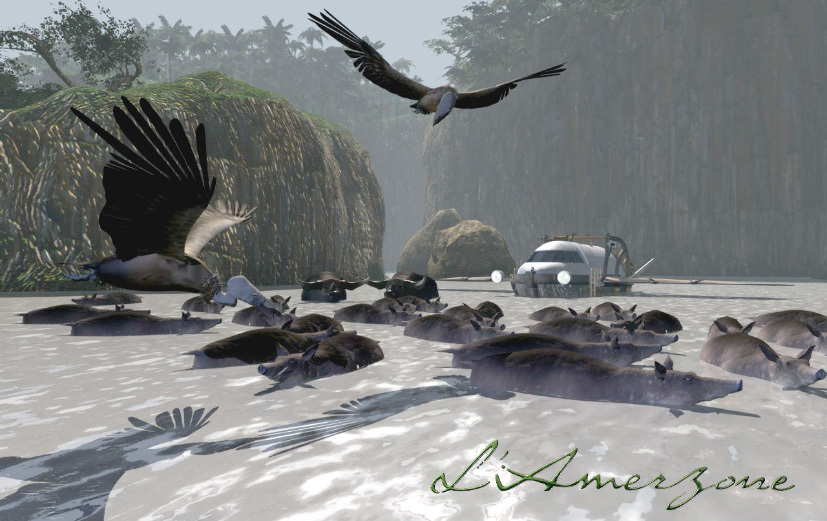
I gave the man his flowers during my blog post begging people not to compare Scorn to Myst, but Benoît Sokal is a name you should respect if you enjoy modern adventure games. Sokal was a professionally trained comic artist before entering the world of video games and is best known as the director and figurehead behind the Syberia franchise. However, most people forget that the Syberia franchise and Sokal's video game career started with the video game buried treasure, AmerZone: The Explorer's Legacy. Unlike Syberia, Amerzone uses a cartoony art style characteristic of Sokal's comic books. However, the game laid the groundwork for the world of Syberia, and its aesthetical choices persist even in the series' most recent titles. It's an exciting experiment and an easy recommendation to anyone who enjoys the Syberia franchise but is unaware of Amerzone's existence. I decided against writing a post about it, not because I did not want to but because I felt it was appropriate to hold on to it until I got to the first Syberia game.
While the game feels more like a prototype than anything else, I ended up loving this game. The world you explore is abstract and fictional enough that its weirder sensibilities feel warranted, but it still functions within the realm of reason. The game has a genuine sense of discovery it primarily rewards as you explore the depths of a tropical forest. The underlying story is crude and nowhere near as compelling as the one in Syberia, but it gets enough right that you never feel like giving up on the game. The ultimate problem with Amerzone is that only some of its best ideas get the total commitment they deserve. In one case, at the start of the game, you discover a journal from a legendary explorer who begs you to deliver an egg of a now-extinct bird species to its rightful home. For the first set piece, you flip through pages in this journal to find the egg, solve puzzles, and even program directions into a flying craft. It might sound fiddly, but it works because the illustrations in the journal perfectly match your in-game roadblocks, and knowing to check the journal becomes an automatic reaction you develop. Then, when you enter the second location, the game completely forgets about the journal until the fifth level, where it makes a return.
Shannara (1995)
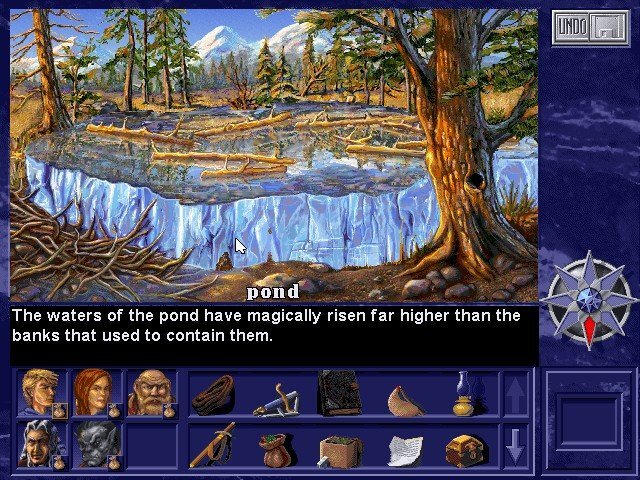
Well, here's a real "trip down memory lane!" If and when I cover Shannara (1995), it will be the crustiest game I assess in my adventure game series. The DOS era of adventure games is a black hole in my repertoire, and before playing this game, I was largely unaware of the Shannara franchise. Speaking of which, we should talk about the namesake of this game because it explains why it has become Abandonware with no hopes of ever getting a re-release. The Sword of Shannara by Terry Brooks is considered by some a seminal work of epic fantasy fiction that grew the commercial prospects of the fantasy genre but is also derided by critics as being highly derivative of The Lord of the Rings. Both statements are true. The Shannara series was a massive blockbuster, but I never found Terry Brooks to be an incredibly creative mind when compared to Tolkein, Ursula K. Le Guin, or even Anne McCaffrey. However, people LOVE The Sword of Shannara, which made it primed for a video game adaptation in the 1990s. However, that leads us to one of the weirdest creative decisions of Shannara (1995). The game features the Shannara characters and setting, but its story is not an adaptation of any book or short story and exists in its own non-canonical timeline.
I'm going to be honest; this game was a massive disappointment. That feeling is partly due to Shannara being a work from "The Coles" or Corey Cole and Lori Ann Cole, the figureheads behind the Quest for Glory franchise. The game came AFTER Quest for Glory III: Wages of War and Quest for Glory IV: Shadows of Darkness but is a massive step in the wrong direction compared to both. Because Shannara errs closer to the CRPG side of things, it's more complex than almost every Quest for Glory game short of Quest for Infamy but is running the same point-and-click engine, which doesn't cut it in Shannara's case. The combat is downright awful, and your best strategy is to avoid all optional battles whenever possible. So, imagine a version of Quest for Glory that requires twice the amount of grinding, has as many instant death traps as King's Quest, and has a combat engine that feels like refried dogshit. I still plan to write about this game because so much of it is utterly fucked, but it will be a while before I muster the strength to do so.
MTV's Club Dead
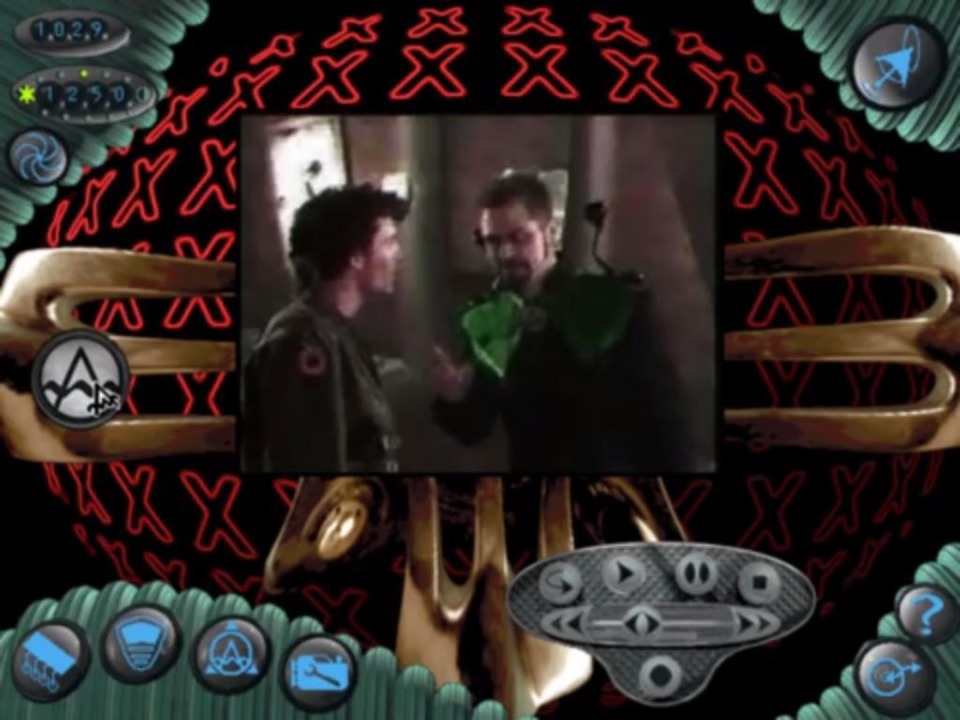
Fuck you @sparky_buzzsaw! Remember when MTV was considered a "counter-culture" television program and was hip with teens? Remember when Viacom gave a shit about making video games? Shit, remember Viacom? The main idea behind these questions converged together and birthed a video game called MTV's Club Dead. The best way to describe it is to imagine Total Distortion but with a corporate label and WAY MORE music videos to watch. Like Total Distortion, the game is a first-person surrealist adventure game with the player investigating murders at a cyberpunk hotel. As you explore the many wild residents at the hotel and crime scenes, you collect clues on who the murderer might be while watching music videos and playing MTV-themed minigames circa 1994. Likely due to the licensing and rights issues associated with some of those music videos and the game's use of the MTV label, this weird and wacky experiment is locked away into copyright purgatory.
MTV's Club Dead is BY FAR the weirdest game I have ever played outside of Eastern Mind: The Lost Souls of Tong Nou, which I also desperately want to share with the Giant Bomb Community. Club Dead was also a colossal pain in the ass to get working on modern technology. I cannot say this for sure, but I have a hunch the game runs all of its music videos, FMV cutscenes, and MTV bits using separate executables and video players. When I tried to stream the game on OBS, my usual Game Capture setup could never detect the FMV cutscenes or music videos. My guess is it is using something like Windows Media Player or Quicktime to run these cutscenes separately from the base game. It does not help the game is programmed in DOS and bootstrapping it to DOSBox is more complex than you'd expect. It's a WILD journey, and I 100% NEED to cover it on the site. My only quibble is that there are large swaths of it where all you do is move from one location to the next and listen to NPCs or watch videos for five to ten minutes.
Starship Titanic
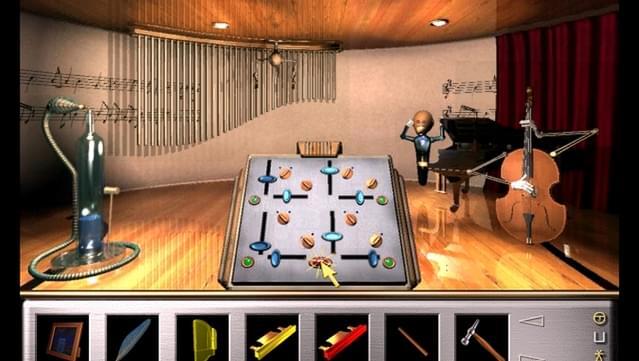
Near the start of my adventure game series, @bigsocrates suggested Starship Titanic as a possible future topic. When I found out the game had a GOG and Steam release, I pounced on the opportunity because I was "done" with rejiggering old PC games to make them work on my desktop at the time. What ensued next was one of the most miserable experiences I had with a video game in 2022. I will share another confession with everyone that might get me in trouble, but I am not the biggest fan of Douglas Adams' style of humor (don't tell @mattyftm). I understand the man was a master of his craft and that his witticisms of government bureaucracy are iconic and novel in their own right. However, his habit of having characters speak technobabble and that being "the point" or the butt of his jokes 90% of the time wears on my nerves after about fifteen pages. He's only one step above Rick and Morty when it comes to relying on verbal diarrhea as a comedic crutch. That's one of the biggest issues I have with the video game adaptation of Starship Titanic, and it does not help that the puzzles are none the better.
It is worth noting that Starship Titanic falls into the same category as the Discworld games. The fact Starship Titanic attempts to kick your teeth in with its bizarre sense of logic is part of the humor, and your ability to accept that determines your enjoyment of the game. However, there are a handful of puzzles where the game goes way too far. For example, in the picture I provided above, the puzzle can only be completed by looking up the answer in a guide. The reason is that the correct placement of every gear and knob is only provided to the player on the physical game box. That's right, when you run up to this puzzle when you attempt to use the in-game hint system, it says to you, "Have you tried checking the back of the box?" and upon doing so, you'll notice the version of the puzzle on the box has the solution. For owners of digital-only copies of the game, you are fucked! Even if you have the box, that being the way you solve a puzzle is fucking BANANAS! There's another puzzle where you must listen to a French-accented waiter and click on his butt twenty-five times! Why twenty-five times? Because the game thinks having you do the same thing over and over again is funny. I need to write about this game, so I can finally move on from it after it inflicted fifty points of psychic damage on me.
The Longest Journey
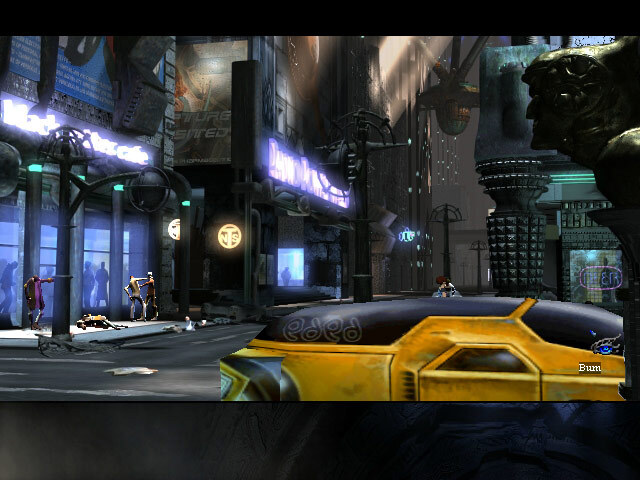
If I heard that I only had three weeks to live or a comet would extinguish all living creatures on this planet in seven days, I would use my time to buckle down and finish a retrospective on The Longest Journey as my final written work. I consider The Longest Journey and Syberia torchbearers of the adventure game genre in the late 1990s and early 2000s, alongside the Myst franchise. However, there's something about The Longest Journey that always feels timeless. April Ryan still stands as one of my all-time favorite video game characters, and her journey of self-discovery remains deeply relatable and resonates even twenty-plus years after the fact. Visually, while some of the pre-rendered skyboxes and backgrounds don't exactly hold up, the sheer variety of environments and locals makes the game a truly epic journey, the likes of which you rarely see today. As to why I did not write a blog about it, the answer is simple. This game is massive and I simply did not have the time to write blogs it rightfully deserves.
The gameplay also holds up remarkably well. That's because The Longest Journey rarely utilizes player death. Almost every puzzle, set piece, and combat sequence is designed to avoid the player needing to worry about quick saves or fail states. Without that worry, you can process the many characters and monuments that occupy every screen April Ryan inhabits. The exploration of lore and dialogue is why you play The Longest Journey, as its worldbuilding is insanely detailed, and there's so much of it. This point leads me to the first sign of the game's growing age. The story's reliance on in-game back-and-forth dialogue is overwhelming, and there are plenty of times when I thought a page's worth of dialogue could have been expressed in two sentences. Likewise, the puzzles run a vast delta from excellent to terrible. If you know, I plan to rip the rubber ducky puzzle a new fucking asshole, but the tiki statue telephone puzzle and underwater sundial aren't that much better either. All that aside, it's an underappreciated classic that everyone should play at least once in their life, and I do not say that lightly.
I Played And Finished These Games But Will Almost Certainly NOT Blog About Them
Return to Mysterious Island
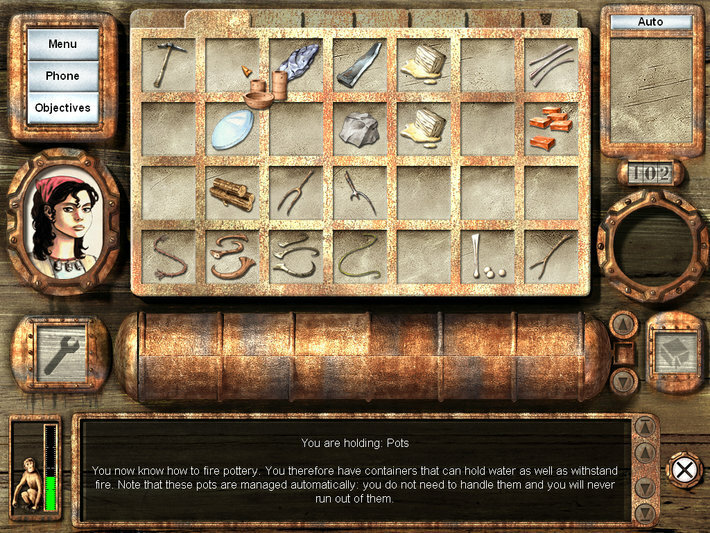
I love Return to Mysterious Island, but I need to figure out how to write a blog about it. The issue at hand is that the game starts as a survival game with many possible ways for your player character to gather enough food to transition to the second phase of the game. If you ask me, the first survival part of the game is the best part. Then, the game transitions into a series of ghost tales and supernatural set pieces borrowing from the works of Jules Verne. While I do not hate these set pieces, the game's visual variety and sense of exploration take a massive nosedive. Most puzzles are clever and have good tells or clues. The issue is that the game requires a bit of trial and error during a few parts where a basic understanding of chemistry is necessary so the player character can make things like gunpower or battery acid.
However, Return to Mysterious Island is a struggle for me to write about partly because there are randomized elements, and no one playthrough is ever the same. Specific missions or quests pop off in different sequences, and the more elaborate puzzles have more than one possible solution. I have tackled adventure games that utilize open-world structures and more freeform puzzles, but not to the degree of Mysterious Journey. The game has an almost HILARIOUSLY bad final puzzle that I want to talk about at some point. However, I might look at both Mysterious Journey games together and, at most, write about their top three and bottom three puzzles. However, it's not exactly fit for that, considering there are only so many puzzles in the most traditional sense in each game. I don't consider gathering enough mangoes and nectarines to heal an injured monkey companion a "puzzle," but that might be me.
Botanicula
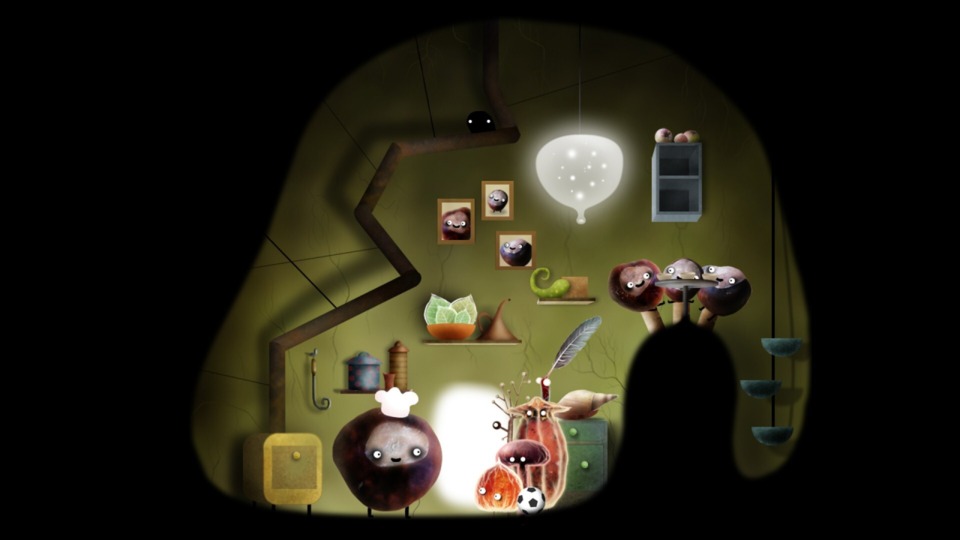
I'm going to sound a little like an asshole for this take, but I do not like any game from Amanita Design post-Machinarium. Their style of environmental storytelling has always come across as too "fuzzy mittens" for my tastes. Additionally, since Machinarium, their gameplay has erred increasingly on the player constantly clicking on everything on the screen to see cute stuff run around to move a block to open a new pathway or flick a switch to build a bridge. At this point, I feel like I know what the solution is to every single Amanita Rube Goldberg machine, and that is putting a massive damper on my ability to enjoy the things they make. Whenever I encounter a roadblock in their games, I know what I need to do and what the solution will look like when I put all the puzzle pieces into the correct spot. I find this a shame because their games are beautiful, and I respect any studio that takes the time to hone its craft to the degree they do.
Botanicula is also one of their less interactive games, feeling more like an art-house collage than an epic journey like with Machinarium or the last two Samorost games. Botanicula is also one of those games where I started to play the game and immediately was cognitively able to recognize it was not a fit for me or my writing style. I got pretty close to getting every single sticker in the game. Still, I knew there was no way I would break down meticulously every environmental signpost for those stickers or every example of piggybacking on every screen. It wasn't happening, and I knew it when I got to the game's midpoint. I already hate how close my adventure game blogs are moving towards becoming full-blown guides for the games I cover, and I did not think there was a way for me to write about Botanicula without that being the case. Maybe I'm wrong, and you all have ideas on what course of action I could take to avoid that, but for now, I'll put Botanicula in the category above "DNF."
Dragon Lore: The Legend Begins
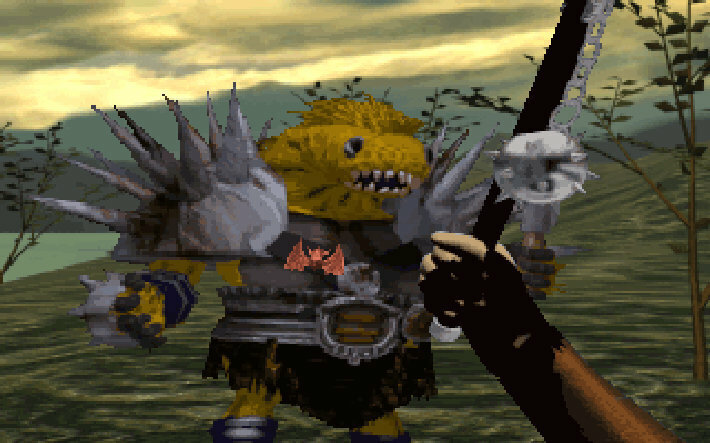
Hey, remember Stonekeep? Remember how Stonekeep spawned a wave of knockoff first-person dungeon crawlers with pre-rendered environments and live-action actors? Dragon Lore: The Legend Begins is one of those but from an adventure game studio. I covered Cryo Interactive when I discussed Atlantis: The Lost Tales, but in short, they were a French adventure game studio at the cutting edge of 3D game rendering in the PC arena during the mid to late 90s. They also made a successful line of edutainment games that the Scholastic Book Club was happy to sell you. Still, when the novelty of fully rendered 3D character models waned, they put all of their marbles into a not-good Dune action game that bankrupted them into oblivion. Be aware that if the name "Dragon Lore" rings any bells, you are thinking of the second game, not this one. Dragon Lore II received a far wider release and even got a few console ports. Unfortunately, Dragon Lore II is a game lost to time, whereas Dragon Lore I has a GOG version readily available.
I danced around this topic when covering Atlantis, but while I understand Cryo is an important studio in the realm of adventure games, I need help to list a single work of theirs that is worth playing today. Some people enjoy their SCUMM-clones like Dune (1992). However, I find the odd marriage between strategy and adventure game in Dune (1992) to be oddly aggravating and incredibly frustrating, both of which are problems with Dragon Lore! Dragon Lore is an adventure game with one of the worst feeling first-person dungeon crawling combat I have ever experienced. Mercifully, the game rarely throws more than one enemy at you, but even then, everything moves at a snail's pace, and the feedback on your actions is nonexistent. The puzzles are almost always fetch quests where the player needs to find a far corner of a map, pick up a glowing trinket and deliver it to one of two people. The ones that are not are optical illusions that made me scream directly into my computer screen. Finally, the game is ugly and no goddamn fun to play. What more is there to say?
All of that aside, I need every single one of you to stop what you are doing and watch the introductory cutscene for this game. Seriously, stop whatever it is you are doing and watch this shit:
DNF: My Complete And Total Adventure Game Failures
Worlds of Ultima: The Savage Empire & Ultima: Worlds of Adventure 2: Martian Dreams
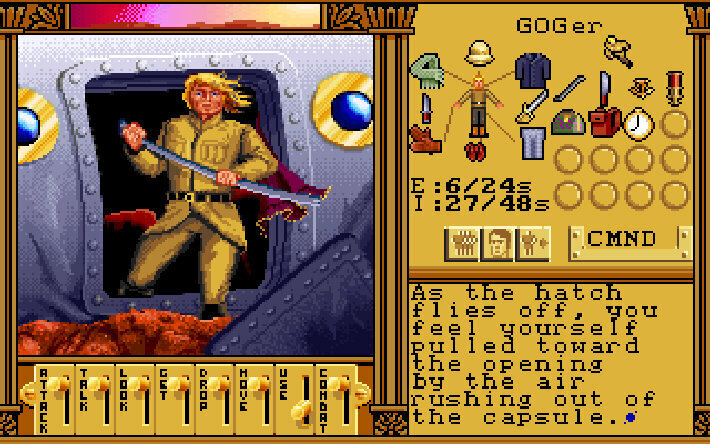
Every year I like to play a game with myself. At least once every two to three months, I pick a genre and see how far back in time I can go with that genre before I feel like I can no longer have fun. I do not do this to belittle or insult those who grew up in a different era or are older than me. However, there comes the point in every generation when the rules and norms for that generation only make sense to those that were there when those rules were the norm. This rule of thumb applies to every video game genre. Hence, I can only go back to Might and Magic: Clouds of Xeen or Sid Meier's Civilization III with those particular series. I draw the line at Ultima VI: The False Prophet when it comes to Ultima, but I can push myself to go as low as Ultima IV: Quest of the Avatar. In fact, not to spoil things, but Ultima IV is going to make an appearance in the second part of this mini-series. That is, of course, if we are talking about the mainline Ultima games and none of the spinoffs because I want to have NOTHING to do with the Worlds of Ultima games.
The good news with both games is that you get them free on GOG upon creating an account. They both run well enough on modern systems and are snapshots of when the Ultima series was king in the land of PC gaming. Unfortunately, both games are cumbersome and clunky, with their marriage between a CRPG interface and adventure game puzzles more likely to draw groans than oohhs and aahhs. Worlds of Ultima: The Savage Empire has the added bonus of a twinge of explicit racism. It takes place in a Mesoamerican village, and the characters in this village are depicted as respectfully as if the game was made by the director of The Birth of a Nation. And while Ultima: Worlds of Adventure 2: Martian Dreams does not have this drawback, I found it to be even more unplayable as it attempts far more complex commands and actions but with the same interface as its predecessor. It also doesn't help that navigation in both games progresses slowly, and the combat is downright terrible. These factors converge into two games I bounced off in about three hours.
Time Gate: Knight's Chase
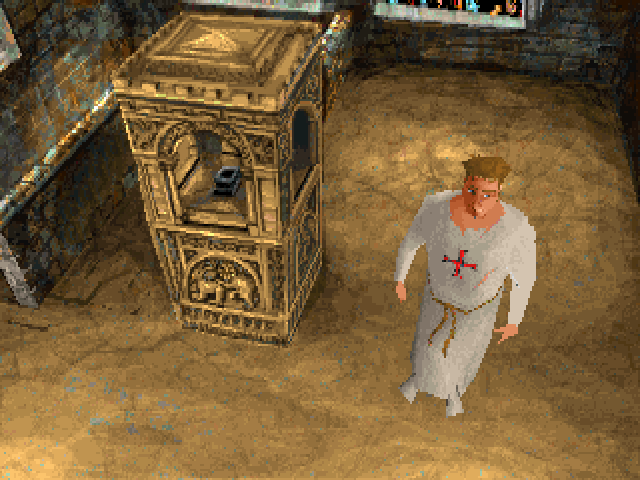
My thought process of playing this game will require a more thorough explanation than some of the other entries here. OG Alone in the Dark is an incredibly important video game, and that fact is not up for debate. It inspired the Resident Evil franchise and informed the creative design choices for many early survival horror games. However, developer Infogrames had difficulty refining the ideas of the first Alone in the Dark. They spread themselves too thin as they churned sequels at a breakneck pace and even tasked the team behind the game to try out unfamiliar genres. Hence, why Alone in the Dark 2 is a massive tonal shit from the first, and why Time Gate: Knight's Chase exists. If you look up images of Time Gate: Knight's Chase, you might be amazed to learn it came out in 1995 because it sure as Hell does not look like it. The game is one of the last to use Gouraud shading rather than 3D polygons or the more economical flat shading and runs the same game engine as Alone in the Dark 2. However, Time Gate emphasizes puzzles more than any Alone in the Dark games that preceded it, and that is to its detriment.
There were several reasons for me to ditch Time Gate. First, the puzzles in this game run a gamut of bizarre but expected survival horror fare of this era and the benign. That made for incredibly boring reading material as most of the difficulty in completing the game descends from its tank controls and static, fixed camera angles. As expected, a handful of quest goodies are hidden behind pillars. Thanks to the fixed camera, these are only possible to find if you constantly click the action button while running around every part of a given environment or are consulting a guide. But the more prominent reason for me not finishing the game was more related to self-preservation. Playing Time Gate would have opened up a slippery slope. If I covered Time Gate, then there's no stopping me from playing Alone in the Dark, meaning I would have to play and review the original Resident Evil and Silent Hill games. And while I love this website and its community very much, that isn't a can of worms I want to open with my puzzle ranking series.
Shivers
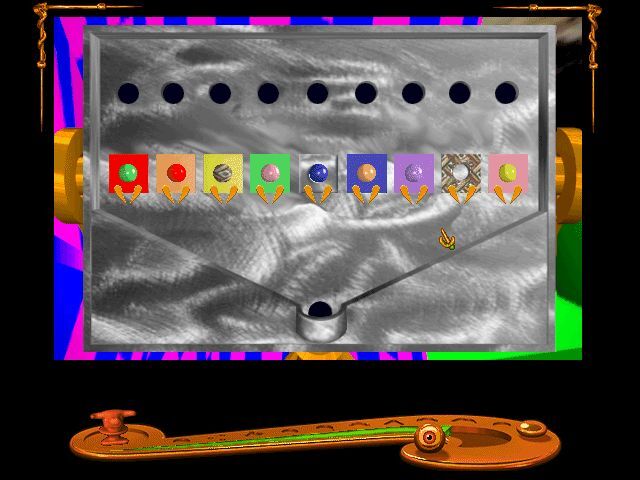
Shivers is "the one that got away." You may recall I ended up posting a blog about D: The Game as a fun tie-in to Halloween. I should clarify how D was a backup. I initially wanted to write about Shivers but couldn't finish the game and had to change course. Shivers has all of the fixings to be a game in my wheelhouse. It's a Sierra game, and I have made it reasonably known I was a Sierra Kid. It has FMV acting, and that's also "my shit." It has a crazy story that goes places and a kaleidoscope of wacky environments that would have been a joy to share with all of you. Alas, things were not to be. Before we review why that might be the case, I should mention Shivers has the reputation of being one of the more challenging games Sierra made during their heyday. Foremost, it has a punishing death system where it is easy to lose health but impossibly challenging to gain back. Also, you can only carry one item at a time, which makes the end goal of constructing ancient vases to capture evil spirits exponentially harder.
I need to explore that last point further. In the world of Shivers, there are thirteen evil spirits, known as Ixupi, that you, the player, need to capture. However, the vessels to catch these monsters have each been broken into two parts, and you need to find the lid and base of every single Ixupi pot to capture the spirits. Two complications make this process soul-suckingly miserable. First, each jar only matches a specific Ixupi, which means of the twenty-six pieces you will encounter, you need to check them first to the correct part and then to the accompanying Ixupi. Second, the location of the ghosts and pottery pieces is randomized. Worse, there are more searchable locations than there are lids and bases. Therefore, even if you consult a guide, there's a high likelihood that the searchable areas it mentions will net you jack shit. Finally, the puzzles to every environment, room, elevator, or significant set piece resets after you exit that location. In a game where needing to backtrack to search for trinkets is built into its DNA, I found that last quibble untenable. In my case, I got to the end of the game but got stuck trying to find a lid for a specific Ixupi vase. I checked every location in the game and realized I was either clicking in the wrong spot in the areas I noted did not bestow an item or placed the piece on the ground and forgot where it was. As I was not about to restart from the beginning, I threw my hands in the air and gave up.
